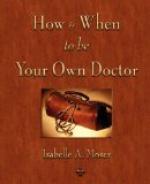To prompt your first step on this health-freedom road, I ask you to please carefully consider the importance of this fact: the body’s routine energy budget includes a very large allocation for the daily digestion and assimilation of the food you eat. You may find my estimate surprising, but about one-third of a fairly sedentary person’s entire energy consumption goes into food processing. Other uses for the body’s energy include the creation or rebuilding of tissues, detoxification, moving (walking, running, etc.), talking, producing hormones, etc. Digestion is one aspect of the body’s efforts that we can readily control, it is the key to having or losing health.
The Effort Of Digestion
Digestion is a huge, unappreciated task, unappreciated because few of us are aware of its happening in the same way we are aware of making efforts to use our voluntary muscles when working or exercising. Digestion begins in the mouth with thorough chewing. If you don’t think chewing is effort, try making coleslaw in your own mouth. Chew up at least half a big head of cabbage and three big carrots that have not been shredded. Grind each bit until it liquefies and has been thoroughly mixed with saliva. I guarantee that if you even finish the chore your jaw will be tired and you will have lost all desire to eat anything else, especially if it requires chewing.
Making the saliva you just used while chewing the cabbage is by itself, a huge and unappreciated chemical effort.
Once in the stomach, chewed food has to be churned in order to mix it with hydrochloric acid, pepsin, and other digestive enzymes. Manufacturing these enzymes is also considerable work! Churning is even harder work than chewing but normally, people are unaware of its happening. While the stomach is churning (like a washing machine) a large portion of the blood supply is redirected from the muscles in the extremities to the stomach and intestines to aid in this process. Anyone who has tried to go for a run, or take part in any other strenuous physical activity immediately after a large meal feels like a slug and wonders why they just can’t make their legs move the way they usually do. So, to assist the body while it is digesting, it is wise to take a siesta as los Latinos do instead of expecting the blood to be two places at once like los norteamericanos.
After the stomach is through churning, the partially digested food is moved into the small intestine where it is mixed with more pancreatin secreted by the pancreas, and with bile from the gall bladder. Pancreatin further solubilizes proteins. Bile aids in the digestion of fatty foods. Manufacturing bile and pancreatic enzymes is also a lot of effort. Only after the carbohydrates (starches and sugars), proteins and fats have been broken down into simpler water soluble food units such as simple sugars, amino acids and fatty acids, can the body pass these nutrients into the blood thorough the little projections in the small intestines called villi.




